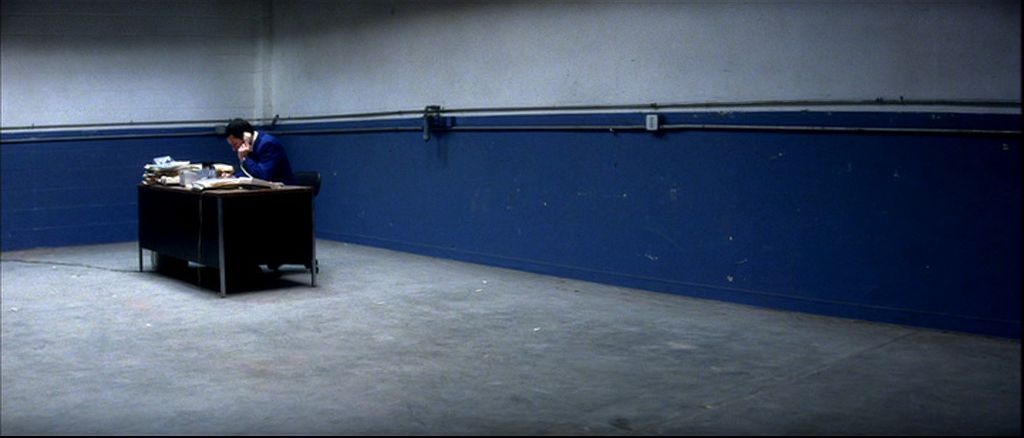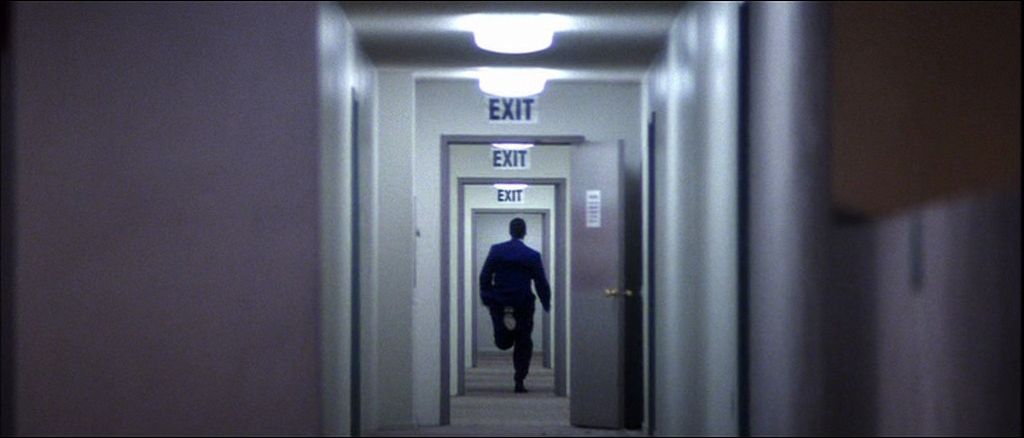Paul Thomas Anderson: Subtle genius or bold innovator
Paul Thomas Anderson, simply one of the best storytellers in cinema. Why? Well, there's no short story to tell.


Paul Thomas Anderson is probably the most significant director of Hollywood from 2000-2010. In this relatively short period Anderson made only eight films and recently released his ninth, “Licorice Pizza” (2021), which was warmly received by critics. Half of his cinematography is already imprinted in history as a significant cultural legacy.
Anderson manages to make each picture infinitely different from the previous one, without changing approach, themes or even faces. While remaining himself, the director manages to reflect and evolve. That's why it's impossible to say for sure what his next film will be, but we can remember the evolution of his talent and his individual handwriting, which will help to recognize Paul Thomas Anderson without a clue in the credits.
Disclaimer: our blog has no academic purpose behind it, because we are viewers just like you. Filmustage does not aim to educate, but to gather a close-knit film community around us. We can be wrong about certain statements - and that is fine. We are open to discussion and criticism. The main thing is to love cinema and talk about it.
Each director has a different idea of how the script will look on the screen. That's why being able to create the image of your film in pre-production is extremely important. Visualise how you see all the elements in your script with Filmustage's Visual Reference board.
Art by @nadi_bulochka
The path to directing
Anderson was born in a family of actors, but his interest in film was not influenced by his parents. The director, as he himself claims, simply liked to watch TV in the kitchen as a child - and eventually decided to make movies himself. Anderson got into filmmaking at a young age, shooting on his father's camcorder. In high school, Paul Thomas Anderson made his first half-hour pseudo-documentary, "The Dirk Diggler Story" (1988), which was about the life of a porn actor and later became the basis for the cult film "Boogie Nights" (1997).
He didn't have a mentor, but he had ambitions that Anderson first told his teachers about and then transferred to the screen. He began to make movies with big themes, big stars, big scope. Apparently, he couldn't have it any other way.
Inspiration, search and formation of style
The director's early works openly cry out for the influence that New Hollywood had on P. T. Anderson. But the director himself doesn't hide it. The cinematography of the 70's had an incredible impact in the emergence of Anderson, as the main stars of the new Hollywood also experimented with the cinematic language and told stories of ambiguous characters.
For example, the plot of "The Master" (2012) where the hero tries to find a place in the world, references Martin Scorsese's "Taxi Driver" (1976). The finale of "Boogie Nights" ironically winks at another Scorsese film, "Raging Bull" (1980).




The director's first pictures remind one of the 70's even more stylistically: the directing is marked by expressive techniques which are in tune with the emotional state of the heroes. This is achieved by deliberate chaotic camera movements, fast-paced editing, as well as Anderson's famous and favorite whip-pan.
Perhaps one of the characteristic elements that Anderson borrowed from the masters of New Hollywood is the long shots. The opening scene from "Boogie Nights" lasts several minutes and contains elaborate camera and character choreography. However, this is not a pretentious attempt to make a reference to "Goodfellas" (1990), but P. T. Anderson's skill in working with scale and large numbers of characters.
The scope with which the director works can be seen first of all in the frame lengths of his films. Anderson's average frame is almost 13 seconds long, whereas in general in modern cinema a frame lasts only 2.5 seconds.
But only long, uninterrupted scenes can accommodate all the many characters and signs of the times that P. T. Anderson narrates. With equal exactingness and attention to detail, he shows the work of an oilman, a porn actor, a hippie detective; he shoots exhaustingly - and at the same time so majestically that it's impossible to tear yourself away.
A similar mix of long-form and clip shots imprinted Anderson early in his career, but it's impossible to argue that this one is stuck inside his style. Thus many fight that the turning point in his career was the romcom "Punch-Drunk Love", 2002.
In this film, a much more inventive handling of film composition is evident: it doesn't seem secondary to the movement of the camera, but rather the opposite. The guiding lines and frames allow the film to be full of images. The characters are emphasized by the color choices, which for the first time in Anderson's career are part of the visual image.



However, it was with "There Will Be Blood" (2007) that he began to move away from expression toward a monumental style. From efficacy to precision and virtuosity. Chaos was replaced by control, composition, as well as color and light. Just compare the extremely dynamic moment from "Magnolia" with another long shot from a drama about an oilman.
Close-ups.
Paul Thomas Anderson's characters are in search of their own wholeness: a family, a friend or a successful career. And despite the fact that his films are full of a multitude of characters, many of them are split into pairs, in which the parallel development of their arcs takes place. This emphasis on characters defines an important stylistic feature: close-ups in which strong dramatic episodes unfold.
Anderson uses close-ups to radically reduce the distance between the viewer and the character to create a trusting distance between them. Note this scene from "There Will Be Blood".
We watch as the hero speaks to someone, but we can't see the interlocutors. It is not until a few minutes later that we are finally shown who Daniel Day-Lewis' character is trying to convince someone. The close-up allows us to feel for the character and to understand that he is a charismatic and successful businessman, but we do not yet know how tough this character is.
Usually such scenes begin with a setting long shot, but here this rule is broken.
What Paul Thomas Anderson Films About
Anderson's filmography suggests that his job as an author is not to write and tell a story, but to let the characters tell it themselves. Therefore, the director never thinks through the structure or schematic arches of the characters' development. All he needs is a hero and time. Master's goal is to create a movie that speaks for itself. The director, then, is only a translator of this independent story.
In short, Paul Thomas Anderson's films are about dysfunctional men who are unable to find their place in the world. Therefore, on the one hand, his favorite type is the superman, the egoist, absolutely devoted to his cause (e.g., the protagonist of "There Will Be Blood", 2007).

On the other hand, Anderson does not let us forget that men are also totally broken, morally compromised people who depend on the rest of the world. And though his characters are professionally successful, they are deeply and permanently unhappy.

Although such a principle may be perplexing, since the director is far from the first director to dare to bring ambiguous characters to the forefront. Nevertheless, as we have already mentioned, Anderson is different in the way exactly he composes stories. Non-structural arcs and chaotic stories, shaped and driven only through the characters. Anderson refuses a pre-drawn path, saturating his cinema with a variety of characters and worldviews, which they verbalize through dialogue. In this way, Anderson's characters are natural people, bending their own lines, not just machines in the construction of the director's desired story.
Often there are different voices and opinions in Anderson's film that can be understood and that make the conflict much more ambiguous and varied. Let's look at an example.
In this scene from "The Master" (2012), the polar positions of the main characters are presented in a dynamic clash, but never converge into a single opinion. Certainly the voice and hand of Paul Thomas Anderson is present in the piece, but it is never placed above the voice of the characters. Without the author's intervention, the conflict unfolds naturally and more emotionally.
For us, this means one thing: Anderson seems to be the only one for whom the characters are more important than revealing the high message of the picture. Just think in "Magnolia" (1999) we're dealing with a girl-communication expert, a righteous cop, an unhappy wunderkind and a wunderkind rapper. And that's not even all the characters in the film! Anderson leaves space for everyone and doesn't suppress anyone by trying to award his opinion or voice. Because of this, it's impossible not to get into each of them on both an emotional level and on the level of personal stories.
Afterword
Paul Thomas Anderson can be compared to a sheet of white paper that is filled with text and characters in the process of producing a picture. This is due to the fact that he does not exercise his overbearing authority as an author or dictate to his films and characters what to say. The plurality of feelings, morals and values saturate each character with great importance. So much so that any one of them can become the main character. That's probably why it's so hard to understand what the author wants to say with his films - and on the other hand, it's also what sets him apart from other directors. His free approach to directing and the subject of authorship, as such, allows us to call Anderson a true creator and, perhaps, one of the greatest directors.
From Breakdown to Budget in Clicks
Save time, cut costs, and let Filmustage’s AI handle the heavy lifting — all in a single day.